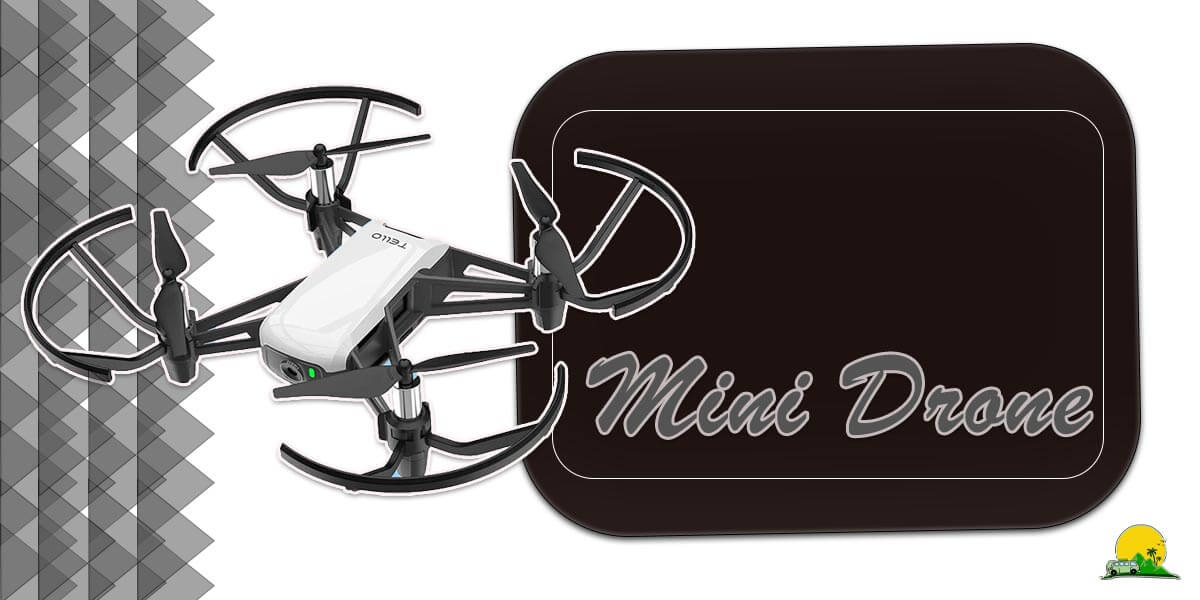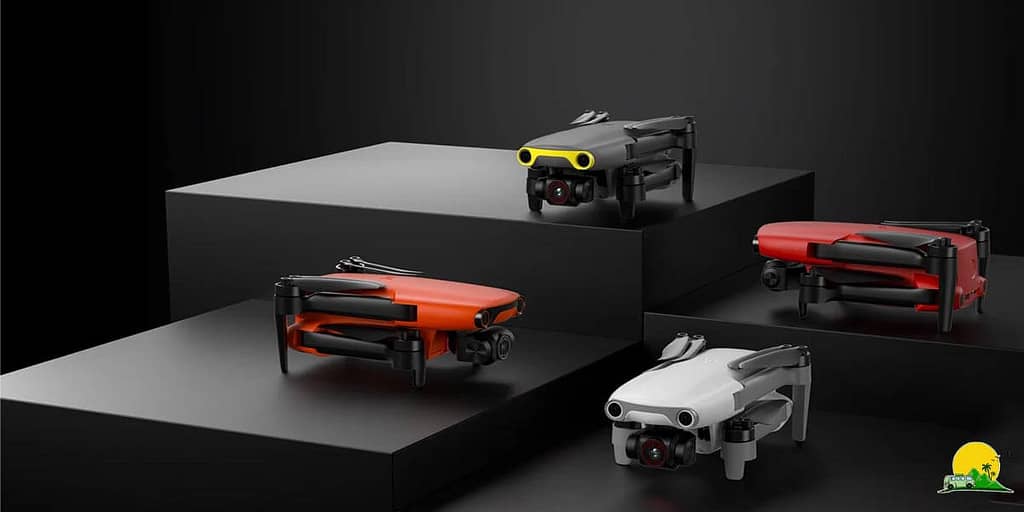Guide to Choosing the Best Mini Drone for Your Travels

Guide to Choosing the Best Mini Drone for Your Travels
Whether you’re a travel blogger or videographer or want to capture beautiful aerial shots of your adventures, a mini drone can be one of the most versatile tools in your bag. In today’s article, we’ll explore everything you need to consider when selecting a suitable mini drone for beginners and more experienced pilots.
index
ToggleWhat is a Mini Drone?
Before diving into specific product recommendations, it’s essential to define what qualifies as a “mini drone.” Mini drones are foldable, compact quadcopters weighing under 250 grams. This weight classification is significant, as most aviation authorities do not require drones under 250g to be registered. Mini drones also offer flight times ranging from 15-30 minutes, have integrated cameras capable of capturing 4K video and 12MP photos, and can be easily transported in a backpack or suitcase. While smaller than professional-grade drones, today’s mini drones still deliver impressive performance that is perfect for travel applications.
The 6 Best Mini Drones for Travel
Now that you understand the key factors to consider let’s examine six of the best mini drones for travel currently available:
DJI Mini 3 Pro
The DJI Mini 3 Pro is our top recommendation and is currently the best mini drone. Weighing only 249g, it has a 1/1.3″ CMOS sensor capable of shooting 4K/60fps video and 12MP stills with a stabilized 3-axis gimbal. Flight time is impressive at 34 minutes, and the Mini 3 Pro introduces DJI’s new Advanced Pilot Assistance Systems for obstacle sensing and automatic flight modes. Beginner pilots will appreciate features like QuickShots that capture dynamic flying shots with a single tap. Advanced users can take complete manual control. Easy to fly via the DJI Fly app, the Mini 3 Pro is compact yet powerful – perfect for travel.
DJI Mini 2
As the predecessor to the Mini 3 Pro, the Mini 2 is still a fantastic, more affordable option now. Weighing only 249g, it captures smooth 4K/30fps video and 12MP photos. Flight time is 31 minutes. While lacking obstacle sensors, the Mini 2 has a user-friendly design and flies with the help of the DJI Fly app. For casual travel photographers just starting with mini drones, the Mini 2 delivers excellent value and performance.
Autel Evo Nano+

The Autel Evo Nano+ is a top competitor for those seeking an alternative to DJI. Weighing only 249g, it can shoot 5.4K video at 30fps and 20MP photos with a stabilized 3-axis gimbal. Advanced pilots will appreciate the Nano+’s ability to capture RAW images and fully manual flight controls. Obstacle sensing and subject tracking make it beginner-friendly, too. Flight time is a decent 20 minutes. The Evo Nano+ is a full-featured mini drone priced lower than DJI’s offerings.
Parrot ANAFI USA
The Parrot ANAFI USA is unique as the only mini drone with a 180° rotating camera, allowing you to capture forward, downward, and even selfie shots. Weighing only 300g, it can shoot 4K HDR video and 21MP photos. Flight time is a decent 25 minutes. An integrated gimbal stabilizes footage. Beginners will appreciate various automated flight modes, though they lack obstacle sensors. The ANAFI offers a versatile camera setup for travel content in a compact package.
Ryze Tech Tello
As one of the most affordable mini drones available, the Ryze Tech Tello is perfect for pilots just starting. Weighing only 80g, it can capture decent 5MP photos and 720p video via a fixed camera. Flight time is limited to 13 minutes, but you get DJI-level controls through the Tello app. The Tello is also programmable via Scratch, making it a fun educational toy. Just don’t expect high-quality footage – but for under $100, it’s hard to beat the Tello as an intro mini drone.
Holy Stone HS720
Offering great value, the Holy Stone HS720 weighs only 420g yet captures smooth 4K/30fps video and 12MP stills with a 2-axis stabilization. Flight time is a lengthy 30 minutes. Obstacle sensing and subject tracking make it safe and easy for beginners to fly. Advanced pilots will appreciate features like the FPV camera and follow-me modes. At around $250, the HS720 is one of the best mini drones in its price range for both casual and more severe travel photography use cases.
Read More: Future of Mobility with Razor’s New Electric Scooter with Seat
Choosing the Right Mini Drone Based on Your Needs
Now that we’ve covered the top options, how do you determine which mini drone suits your travel needs and budget? Here are some recommendations:
Beginners: DJI Mini 2, Ryze Tech Tello, or Holy Stone HS720. These offer user-friendly features like obstacle sensing at affordable prices.
Videography: DJI Mini 3 Pro or Autel Evo Nano+ for their 5.4K/8K video capabilities and manual flight controls.
Photography: DJI Mini 3 Pro, Autel Evo Nano+, or Parrot ANAFI for their high-quality cameras and shooting modes.
Tight Budget: Ryze Tech Tello is affordable at under $100 or used Mini 2 models.
Varied Shots: Parrot ANAFI for its rotating camera or DJI Mini 3 Pro’s QuickShots modes.
Long Flights: DJI Mini 3 Pro, Holy Stone HS720, or Autel Evo Nano+ with over 20 minutes flight times.
Best Value: Holy Stone HS720 offers great specs like the DJI Minis but at a lower price point.
No matter your needs, we hope this guide has helped you identify the mini drone that aligns best with your needs so you can capture stunning aerial perspectives from your travels. Always fly safely and legally by checking local drone regulations, too. Happy flying!
Travel Tips for Flying Mini Drones Legally and Safely

While mini drones open up creative possibilities, pilots must fly them responsibly. Here are some expert travel tips for safe and legal mini drone operation:
- Check local drone laws for permits, registration requirements, or restricted flight zones in places you’ll visit. Most countries require marking drones and only flying within a visual line of sight.
- Download aviation maps like AirMap to check flight restrictions near airports and protected areas. Always give way to human-crewed aircraft.
- Only fly in open areas away from crowds, buildings, and infrastructure. Avoid residential neighborhoods without permission.
- Start flying in Beginner mode, if available, until you’re comfortable with the controls. Stay within your skill level.
- Inspect your drone before each flight and check all control surfaces are moving freely. Land immediately if anything seems off.
- Fly during daylight hours only for visibility. Avoid strong winds, rain, and other weather that could impact controls.
- Don’t fly near animals or people without their consent. Always keep your drone within arm’s reach for safety.
- Consider getting drone insurance if your aircraft is damaged or causes an incident during travel.
- Pack spare batteries and props, especially if traveling internationally where repairs are unavailable.
- Protect private property rights and local cultural sensitivities when operating your drone.
Following these common-sense guidelines will help ensure safe and responsible mini drone operation no matter where your travels take you. Always put safety first – that way, you can focus on capturing creative aerial perspectives instead of dealing with potential incidents or fines. Happy flying!
Recent Posts
Contact Us
+1 437 499 4559










